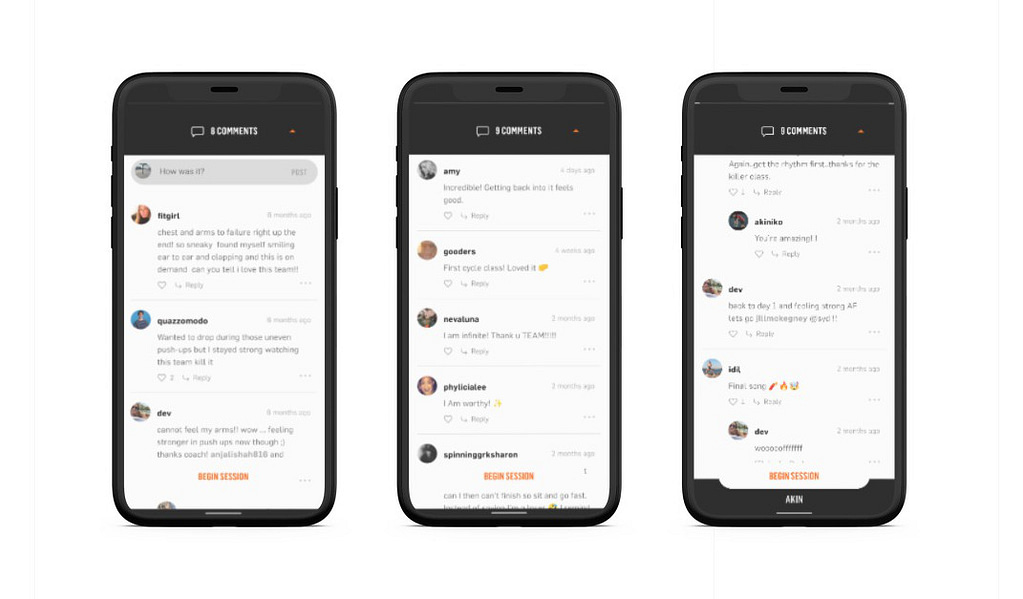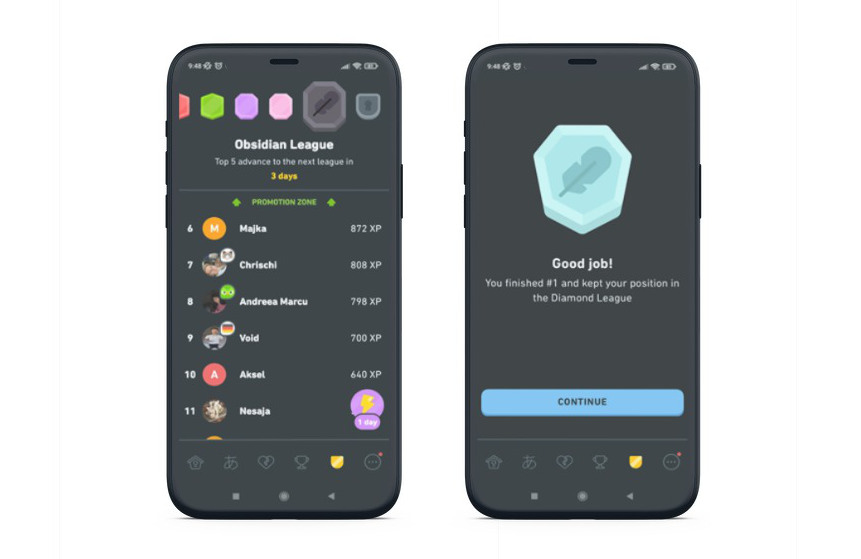The demand for fitness products and services has never been so high – and it’s still growing. On the other hand, it may never have been so tough for the gyms and fitness studios to acquire customers and keep gym membership retention at a healthy level. How come?
The answer isn’t simple, as there are many factors that impact this situation. First, we observe a generation change. Second, we witness a major change in human habits caused by the Covid-19 pandemic. Last but not least, we see the transformation of the fitness market with online fitness classes competing with the traditional gyms and fitness studios.
The first challenge that gyms and fitness clubs need to overcome in order to stay in the game is to engage their former members and bring them back to studios. Once it’s done, however, it is equally important to work on gym member retention strategies and improve membership retention in the long run. How to do it? In this article, you’ll find out where your customers went, how to win them back, and how to make sure that this time they will stay.
First, let’s understand what problem we are dealing with.
Gyms are losing customers
Monterey Sports Center, a city-funded gym in California, has recently reported that its gym membership retention and revenue are down 50% post-pandemic. And they are not an exception:
- According to Boutique Fitness Solutions, 30% of fitness studios in the US have closed due to the Covid-19 pandemic.
- The same happened to 15% of US gyms (IHRSA).
Let’s face it: the situation is tough and requires immediate action.

What is a typical gym member retention rate?
According to the research shared by the Fitness Business Association (former Association of Fitness Studios), the gym member retention rates of traditional health clubs have sat at around 71.4% – and have been stable since 2016. The research, however, comes from before the Covid pandemic.
To say that 2020 has irreversibly changed the sports & fitness industry is to say nothing. First, as numerous gyms have closed due to restrictions, we could observe a significant market reshuffle. Many studios attempted to go online and conduct training sessions on Zoom and other platforms. But once the space got crowded, it became more difficult than ever to attract new and retain existing customers. Moreover, with many free online training sessions, building a solid business model only around Zoom sessions became almost impossible.
Read also: Building an online fitness business: how to grow your fitness business in uncertain times
Has the situation changed after lifting the restrictions? Undeniably. But it’s a mistake to assume that it means going back to how things worked before the pandemic. Now, in 2022, one of the biggest challenges for American boutique fitness studios & gyms is related to improving member retention and winning past members back, as stated in the recent BFS report:

The question is: where did those gym members go, and what can you do, as a gym owner, to win them back?
Digital competitors
As reported by Forbes, remote work opportunities leaped from under 4% of all high-paying jobs before the pandemic to about 9% at the end of 2020 and to more than 15% today – and the shift does not apply only to work. Parallelly to this shift, we observe another trend: a transition to work OUT from home. That’s right: your customers didn’t go to another gym. They went online. And this means that you need to compete not only with other local studios but also with online fitness giants such as Mirror, Zwift, Tonal, iFit, NordicTrack, or Peloton. The last one is an interesting example of a digital content-based fitness business.
Read also: 6 ways workout apps help gyms successfully bounce back to normal after Covid-19
What makes Peloton so popular?
Peloton is one of the biggest online gyms in the US. Its main products are Internet-connected stationary bicycles and treadmills that enable monthly subscribers to remotely participate in classes via streaming media. Founded in 2012, it became one of the most famous examples of how digital companies flourished during the pandemic.

Providing customers with customized and personalized training that fit users’ mood, goals, music style, experience level, and schedule, Peloton turned out to be THE option that the customers needed during the pandemic. They could exercise at home, anytime they wanted, and got a great user experience. Let’s face it – when you read that “you really can get a better-than-the-gym workout at home. It is called Peloton”, you want to check it out.
Read also: Data science in fitness
So if you’re wondering where your gym members go, Peloton may be the answer. The question is how to win them back?
Omnichannel/hybrid solutions are on the rise
The good news for the industry is that even though the consumers seem to like it online, the need for social interactions gradually lures them back to traditional gyms. According to the Les Mills 2021 Global Report, the ideal consumer mix of gym and home workouts is 60:40. Moreover, 2/3 of the survey respondents claimed that they prefer to work out with others, highlighting social interactions as one of the main advantages of brick & mortar gyms.
It all makes sense when we consider the demographics of current members. According to the 2019 Les Mills Global Consumer Fitness Survey, 80% of all gymgoers are Millennials (born between 1981 and 1996) or Gen Zers (1997-2012). One of the characteristics of these groups is the focus they put on social interactions. It is important for them to meet with other people, build relationships, and be a part of a community. Even though they are digital natives, they don’t want to be digital prisoners.
On the other hand, both Millenials and Gen Zers are known for their reluctance towards long-term commitment. They don’t want to buy annual memberships; instead, they expect to have a monthly subscription payment model with no obligation. As a result, they tend to churn more often than the older gym members, switching between different gyms and other sports facilities but also between different types of workouts.
In this perspective, hybrid solutions are the golden mean for gym members. Being able to go to the gym and benefit from social interactions when they want to, at the same time having the flexibility to work out from home, workation, or even from holidays – this is what new generations of gymgoers need. As put by Chris Rondeau, CEO of the gym chain Planet Fitness (Bloomberg, 2021):
“A legacy of the pandemic is that people know how to juggle various things at home now. When the pandemic dies down, digital options will be a substitute they’re familiar with if they don’t have time to make it to the gym. It’s ingrained in habits now.”
What does it mean for the gyms and health clubs? First and foremost, it means that they have a new category of competitors that they didn’t have back in 2019: digital fitness companies. And in order to adjust to this new situation, they will need to introduce digital services – at least to some extent. But will it be enough to engage former gym members and win them back as customers?
Read also: How to make a fitness app
How to engage former gym members?
Your former gym members have left for a reason. As you already know, their habits have changed and, at some point, they realized that what your gym offered was not enough for them. To re-engage them, you need to change it. If you don’t adjust your gym’s offer to their current needs, you won’t bring them back. Moreover, you will see the next members churning one by one.
The good thing, though, is that those members have already chosen your gym before – and they also did it for a reason. All you have to do now is to show them that you are still there – with all the good things that made them work out with you before AND adjusted to their current needs. It won’t be easy, it will require you to learn new skills and modify the business model that has worked for years. But once you do it, you will never want to go back to how it was – and neither will your club members.
Read also: How to create a bulletproof fitness marketing strategy?
How to increase gym membership retention? 5 effective gym membership retention ideas
Switching to the hybrid model will definitely make it much easier to work on your gym membership retention strategy. With the help of the best gym management software, you are able to interact with your gym members even when they are absent at the gym and support them in achieving their fitness goals. Here are a few ideas on how to keep your customers engaged:
1. Be flexible
One day, your clients may want to go to the gym and train offline, and the other day – train online. If you don’t want to share their engagement with competitors, you need to provide them with both options: mix in-club and virtual classes. Many of the GMS products offer Zoom integrations, while the most complex ones (e.g. Hapana, Club Ready) have digital content suites built-in. If your management system includes such a feature, you can live stream your classes, publish on-demand videos, and track attendance.
2. Strengthen your strengths
It’s important to keep whatever worked for your gym before (fancy studio, modern equipment, good community, great coaches). You want to add an extra value, not to turn everything upside down.
Technology is a leverage. If you put it to something that works, to the fitness business that customers love, it will work exponentially better. Think about your strengths, or even better – ask your customers what’s the best thing about working out with you. This is the value proposition you should promote and enhance. Is it a personal approach? Diversified workouts? Running a socially responsible business? Or maybe the community you’ve built? Once you know what your customers already value and what brings them to your gym in the first place, it will be easier to reflect it in a digital product.
Read also: How to Sell Gym Memberships?
3. Communicate updates, run challenges and special offers
No matter how awesome job you’re doing, it may not bring you profit unless you tell people about it. Use your gym management software to send emails with product updates, special offers, or new challenges. If you decide to invest in having a custom app, you can also think of adding different means of communication, such as push notifications.
4. Focus on social interactions
2 out of 3 gym members declare that they prefer to work out with others, highlighting social interactions as one of the main advantages of traditional gyms & fitness clubs. It’s natural – as humans, we share a psychological need for belonging and mutual support. That’s why it is crucial for gyms and fitness businesses to cultivate communities regardless of their business model.
It has already proved to work. As reported by Airnow Data Market Intelligence, “during the first few weeks of lockdown (March 2020), overall downloads of health and fitness apps grew 27 percent, but apps that include a community component saw four times as many downloads”.
To satisfy this need for the gym community when going online (or hybrid), you should think of adding some social features to your platform. A great example can be AArmy – a fitness studio from New York that has moved its training online during the pandemic and managed to grow its business regardless of the restrictions. On the AArmy online platform, there is an “Instagram like” social addon. When joining an online training session, users can interact with each other by sharing comments under the video. By adding such social features to your online sessions, you can engage members (users) even in the on-demand group classes.

5. Use goal tracking and provide your gym members with feedback
Goal tracking is one of the most important technology trends in fitness. It will help your customers monitor their progress and achieve better results. When you track the results, it’s easier to give them personalized recommendations – propose more challenging workouts if they are doing well or provide valuable feedback on what to improve if they struggle to achieve their fitness goals.
Moreover, if your gym members see their progress, they will feel gratified and therefore more motivated to keep working out. From a gym owner’s perspective, this means higher gym membership retention and increased lifetime value of existing members.
You can also use that data to gamify the experience and encourage more members to exercise regularly.
6. Gamify user experience
Gamification is another element that can work as a part of an effective customer retention strategy. It’s the idea of applying typical elements of game playing (e.g., point scoring, competition with others, rules of play) to other areas of life. Simply put, it promises to make the hard stuff fun. This can be incorporated into existing platforms or implemented as addons. You can, for example, create leaderboards where users can see their scores and reward them with points for finished workouts (with extra points for exercising in the studio?). It will increase your gym members’ motivation and engagement.
It is important, though, to apply gamification wisely. It’s not only the game itself that makes playing fun. It is also the promise of winning. A win says that practice has paid off and motivates one to continue playing (and continue winning). That’s why the traditional leaderboards put in brick & mortar gyms rarely encourage new members to work out more – if they don’t see a chance to win, there is no point in joining the competition.
When designing your own fitness app development solutions, however, you can create leaderboards where users (members) are divided into leagues (like on Duolingo, a popular language-learning platform). That way, the beginners will be able to compete with other gym members but won’t be intimidated by the scores achieved by fitness professionals who have been training for years.
Read also: Cost of creating fitness apps

Ways to increase member retention – key takeaways
In the post-pandemic reality, you don’t simply win customers back – you need to follow them and catch up with their needs. Even if it means changing your own habits and business model.
As recent studies show, more than 60% of Americans who exercise regularly will likely prefer a mix of working out at a gym or studio and at home. And this is the voice that gym owners need to hear. Growing your fitness business online is no longer an option; it’s a must.
See how we helped a top NY studio move online, boost customer experience for the existing clients and reach over 20,000 new users
